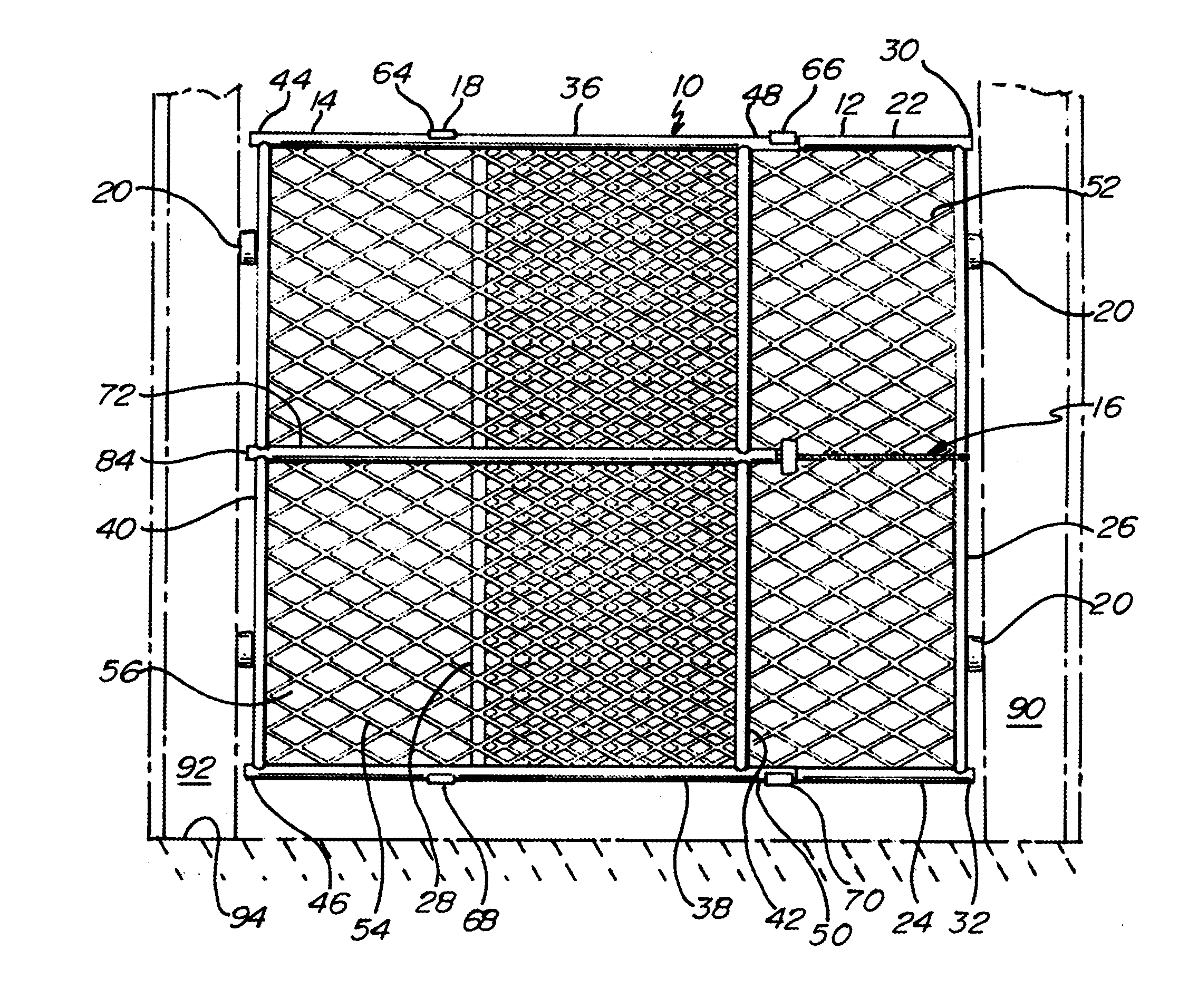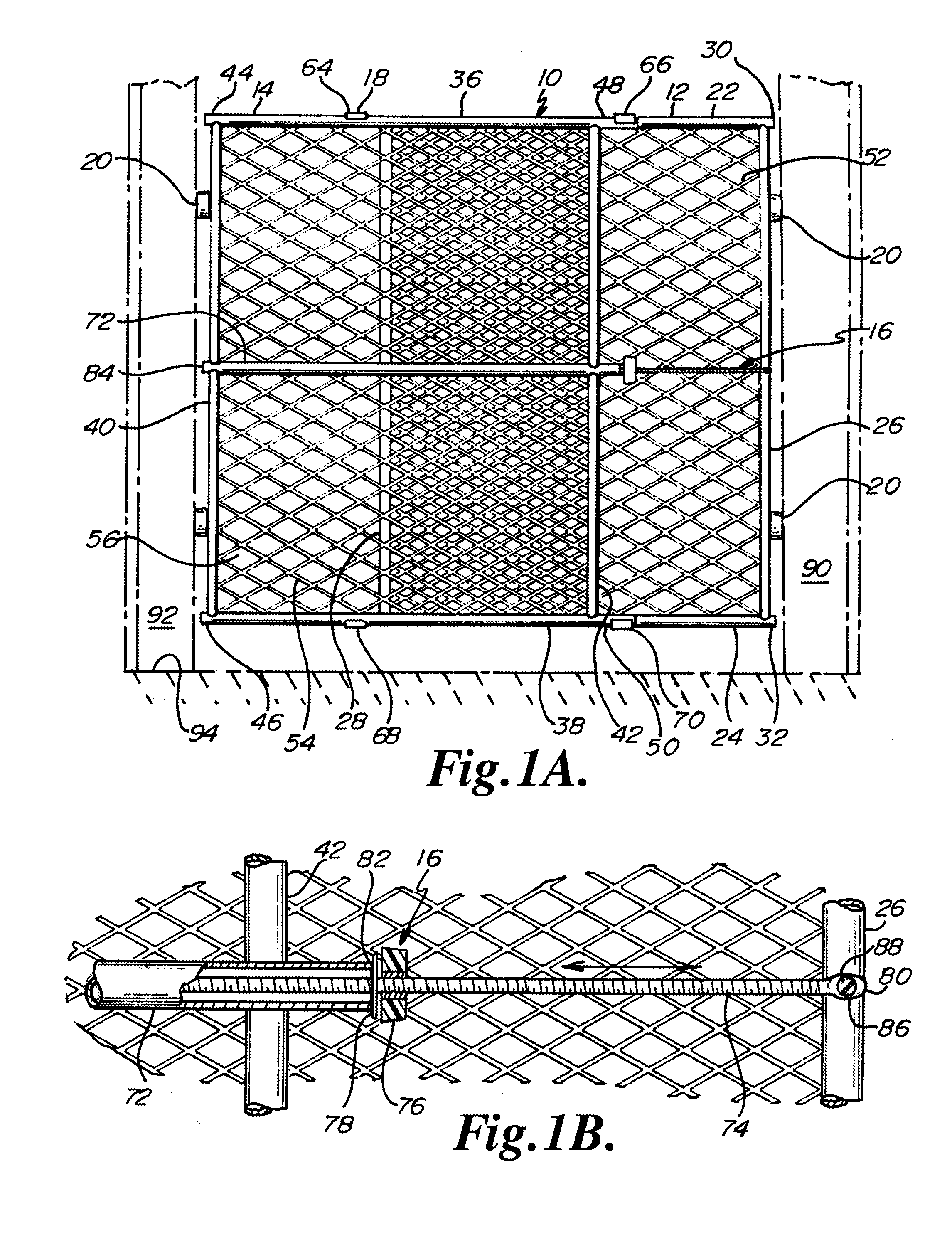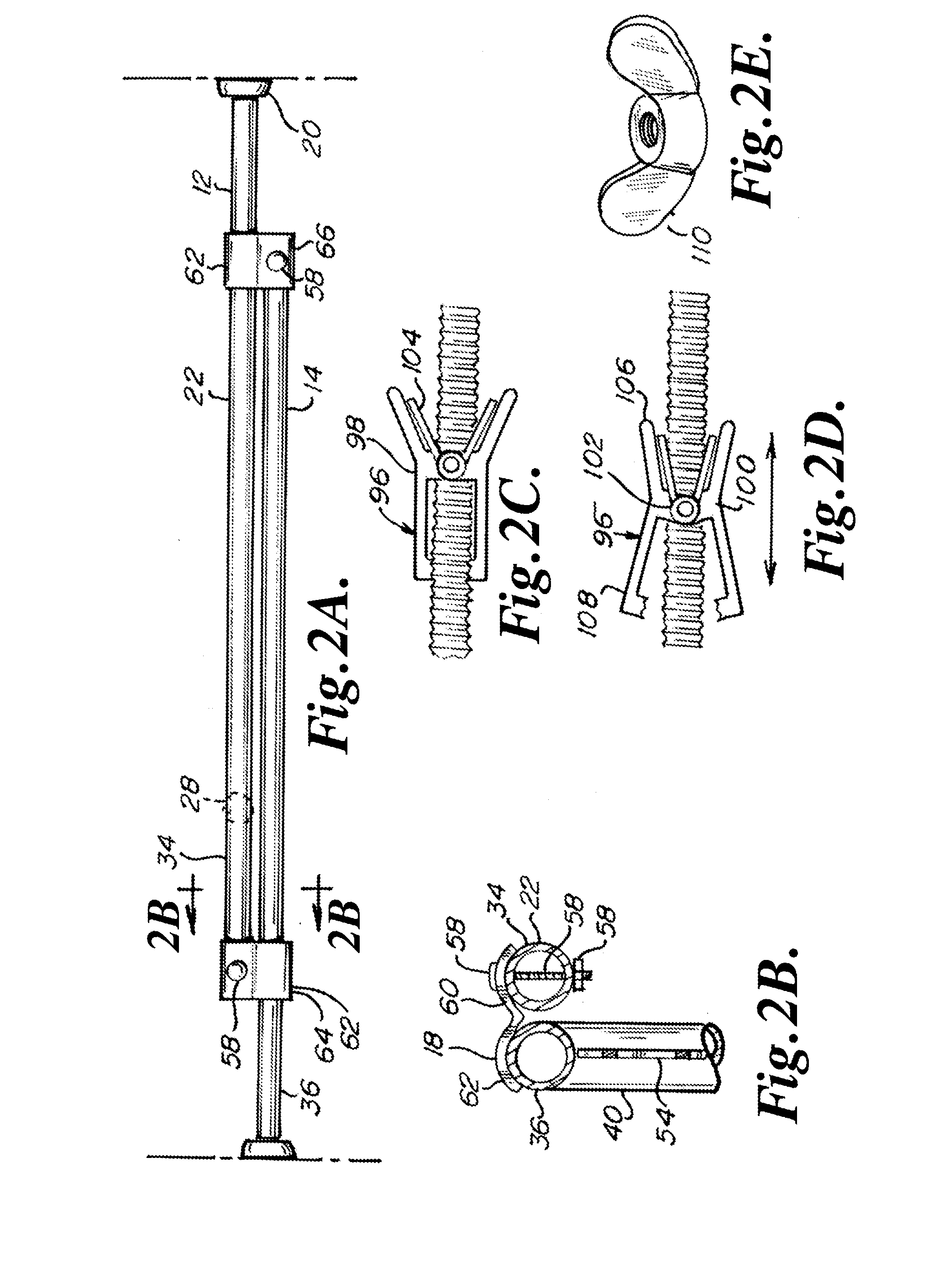Quickly Slideable And Incrementally Adjustable Barrier
a technology of incremental adjustment and sliding, applied in the field of barriers, can solve the problems of increasing the effective length of the gate or barrier, the gate or barrier is too long and may not fit in such a doorway, the gate or barrier may bend and break, or the mechanism may break, etc., to achieve the effect of easy and quick axial sliding, simple operation, and easy operation
- Summary
- Abstract
- Description
- Claims
- Application Information
AI Technical Summary
Benefits of technology
Problems solved by technology
Method used
Image
Examples
Embodiment Construction
[0048]As shown in FIG. 1, the present quickly slideable and incrementally adjustable barrier is indicated by reference numeral 10. The barrier 10 generally includes a first partition 12, a second partition 14, an adjusting and pressurizing mechanism 16, guides 18 running to and between the first and second partitions 12, 14, and bumpers 20 on an outer end of each of the partitions 12, 14.
[0049]First partition 12 includes an upper member 22, a lower member 24, an outer end member 26, and an inner end member 28. Members 22, 24, 26 and 28 are preferably steel and tubular. Members 22, 24 run parallel to each other and preferably run horizontally when the barrier 10 is in use. Members 26, 28 run parallel to each other and preferably run vertically when the barrier 10 is in use. Members 22, 24 are preferably disposed at right angles to members 26, 28, and the junctions of such members 22, 24, 26, 28 are welded. End members 24, 26 run to and between upper and lower members 22, 24. Upper me...
PUM
 Login to View More
Login to View More Abstract
Description
Claims
Application Information
 Login to View More
Login to View More - R&D
- Intellectual Property
- Life Sciences
- Materials
- Tech Scout
- Unparalleled Data Quality
- Higher Quality Content
- 60% Fewer Hallucinations
Browse by: Latest US Patents, China's latest patents, Technical Efficacy Thesaurus, Application Domain, Technology Topic, Popular Technical Reports.
© 2025 PatSnap. All rights reserved.Legal|Privacy policy|Modern Slavery Act Transparency Statement|Sitemap|About US| Contact US: help@patsnap.com



